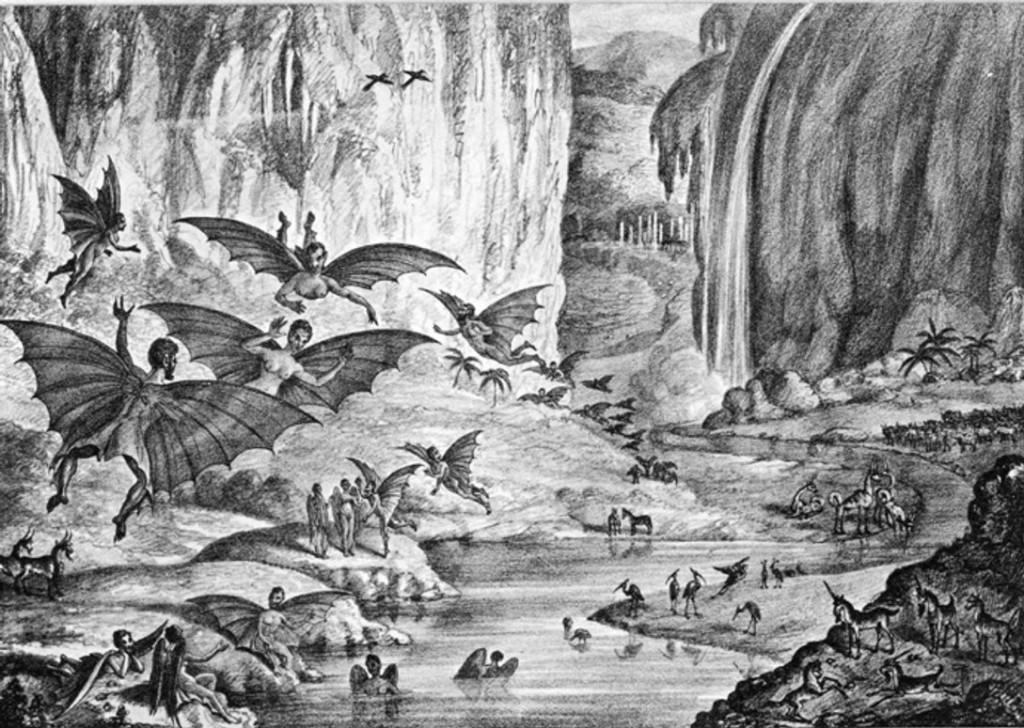Good morning.
Whitewater will have a sunny Sunday, with a high of eighty-eight. Sunrise was at 6:12 AM and sunset will be 7:41 PM. The moon is in a waning gibbous phase with 75% of its visible disk illuminated.

And of the moon, on this day in 1835, a Great Moon Hoax began:
On this day in 1835, the first in a series of six articles announcing the supposed discovery of life on the moon appears in the New York Sun newspaper.
Known collectively as “The Great Moon Hoax,” the articles were supposedly reprinted from the Edinburgh Journal of Science. The byline was Dr. Andrew Grant, described as a colleague of Sir John Herschel, a famous astronomer of the day. Herschel had in fact traveled to Capetown, South Africa, in January 1834 to set up an observatory with a powerful new telescope. As Grant described it, Herschel had found evidence of life forms on the moon, including such fantastic animals as unicorns, two-legged beavers and furry, winged humanoids resembling bats. The articles also offered vivid description of the moon’s geography, complete with massive craters, enormous amethyst crystals, rushing rivers and lush vegetation….
Readers were completely taken in by the story, however, and failed to recognize it as satire. The craze over Herschel’s supposed discoveries even fooled a committee of Yale University scientists, who traveled to New York in search of the Edinburgh Journal articles. After Sun employees sent them back and forth between the printing and editorial offices, hoping to discourage them, the scientists returned to New Haven without realizing they had been tricked.
On September 16, 1835, the Sun admitted the articles had been a hoax. People were generally amused by the whole thing, and sales of the paper didn’t suffer….
